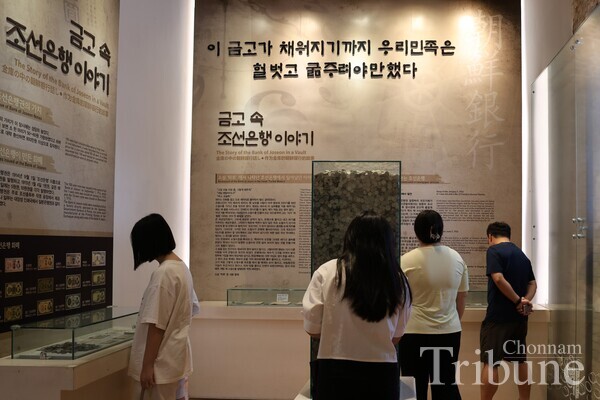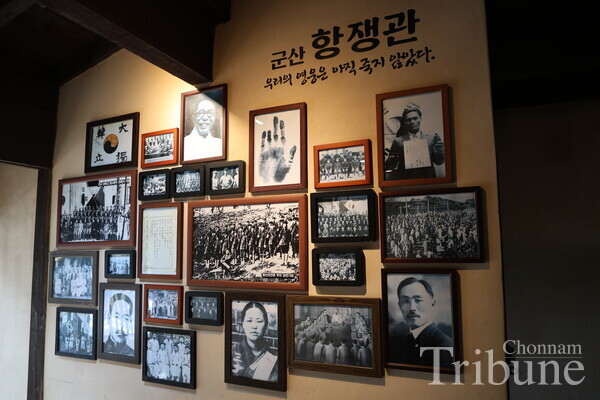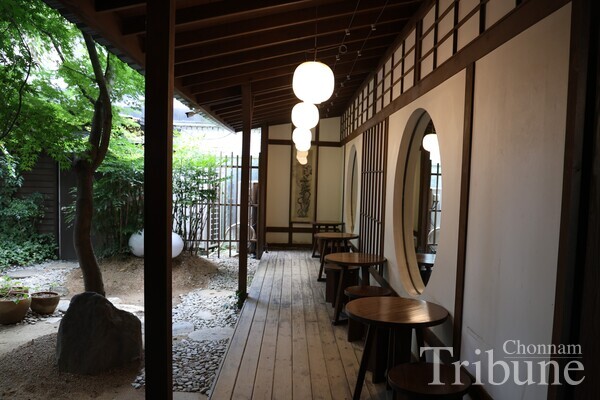
Gunsan is a port city with traces of Korean modern history deeply embedded in its streets and architecture. With rich cultural heritage and historical significance, the city tells a story of resilience and transformation through its landmarks. The Chonnam Tribune seized the opportunity to explore this city, delving into three historical sites that reveal the brutality of Japan’s exploitation and oppression, the spirit of resistance, and the intricate blending of past and present that define Gunsan today. This journey through time invites readers to reflect on the enduring impact of these events on the present and future.
Echoes of Colonialism: Gunsan Modern Architecture Museum
The building currently housing the Gunsan Modern Architecture Museum has some history of its own. It was depicted in Chae Man-sik's novel "Turbid River" as the bank in which character Go Tae-su worked. It actually served as the Gunsan Branch of the Joseon Bank which facilitated Japan’s economic domination over the region, standing as a stark symbol of predatory capitalism. Designed by renowned Japanese architect Nakamura Yoshihei in 1922, it is a significant historical site that vividly illustrates the abuse and persecution experienced by the Korean people during the Japanese colonial period.
The building has been meticulously restored and repurposed as the Gunsan Modern Architecture Museum, offering visitors a poignant glimpse into a dark chapter of Korean history. Its interior features exhibitions, such as miniatures of modern Gunsan architecture, a display of artifacts from the Joseon Bank, and a memorial room dedicated to Japan’s forced annexation of Korea. This museum serves as a powerful reminder of people’s suffering and the broader impacts of Japan's imperial ambitions in Korea.
The Spirit of Resistance: Gunsan Resistance Museum
The Gunsan Resistance Museum is a moving tribute to those who courageously resisted Japanese rule. Situated in a modest building, the museum serves as a powerful reminder of collective defiance against Japanese occupation. It commemorates the residents of Gunsan by safeguarding historical documents, photographs, and personal testimonies that recount various forms of resistance. The exhibits, which detail everything from organized uprisings to subtle acts of defiance, offer a deeper understanding of Korea's struggle for independence and sovereignty. The museum also plays a crucial role in ensuring that the bravery and sacrifices of those who fought for freedom are remembered and honored, preserving their legacy for future generations.
One of the museum's key features is an interactive exhibit in which visitors can engage with the history of resistance through the display of torture devices used during the occupation. This immersive experience allows them to connect emotionally with the fight for independence, fostering a greater appreciation and empathy for the hardships endured by freedom fighters. "I studied the March 1st Independence Movement in school, but witnessing the exhibits here made it feel much more tangible," said Moon Chae-eun, 18. "It’s inspiring to know that people from our history played such a crucial role. It makes me proud to be Korean."

A Harmonious Blend of History and Modernity: Café Teum
Housed in a Japanese-style building from the colonial period, Café Teum is a fascinating blend of history and modernity. By preserving original features such as wooden beams, sliding doors, and tatami mats, this space allows visitors to experience the architectural style of that era firsthand. The careful restoration and thoughtful design invite guests to step back in time, providing a unique opportunity to feel the ambiance of a historical Japanese house while enjoying the comforts of a modern café.
A representative of the café expressed her hope that visitors would find relaxation and comfort in the serene atmosphere provided by the Japanese-style house. Its interior seamlessly integrates these historical elements with contemporary touches, including comfortable seating and ambient lighting, creating a warm and inviting atmosphere. For many visitors, taking a visit to Café Teum is not just about enjoying a cup of coffee, but about connecting with the layers of history embedded in the space. This thoughtful transformation of a colonial-era house into a café exemplifies Gunsan’s approach to preserving its past while making it relevant for today.

A City of Memory and Reflection
Gunsan is a city where history is not just remembered but deeply felt through its well-preserved sites of resistance and resilience. By exploring these places, tourists can do more than just witness traces of Japan's exploitation and the courageous resistance of its citizens—they can also actively engage with living history that still shapes the city today. This journey through Gunsan's historical sites is more than a mere visit; it is an opportunity to connect with the city's spirit of defiance and renewal. So, how about immersing yourselves in these powerful narratives? A visit to Gunsan provides the opportunity to profoundly appreciate its enduring legacy and continued influence.
By Moon Si-eun, Reporter
